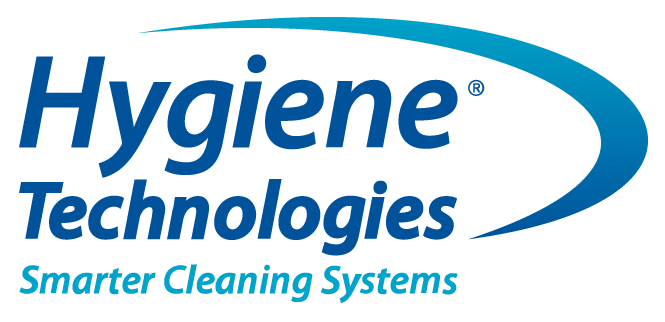Hello Guest,
A common method for controlling contamination at floor level is the use of sticky mats.
While these seem like a really cost effective option, they are only 27% effective when preventing foot and wheel-borne contamination. There are several key factors to consider when comparing sticky mats with Dycem’s reusable contamination control mat.
SIZE
The average size of a sticky mat is usually no larger than 1 metre by 0.5 metres. This does not allow a surface area large enough to effectively decontaminate shoes and wheels.
Research shows you need at least 6 footfalls and three full wheel turns to achieve optimal decontamination.
The usual placement of only one sticky mat at the entrance of a critical area is not sufficient as staff can accidentally step over or around the mat, resulting in little to no contamination removal
Dycem contamination control mats are customizable, helping create an unavoidable barrier, ensuring maximum protection each time.
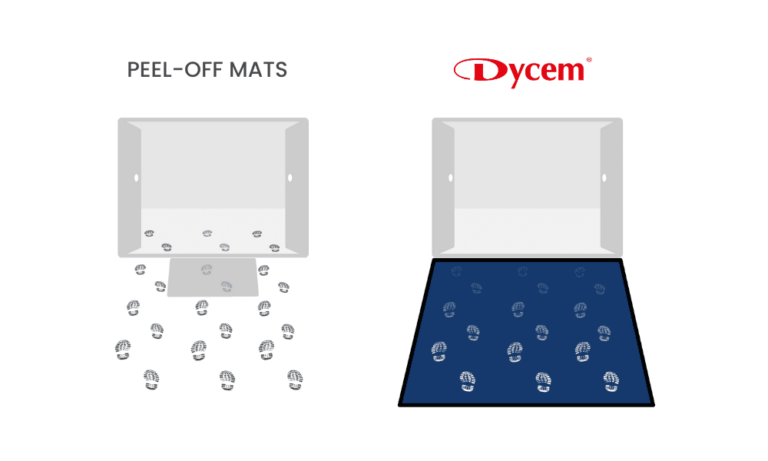
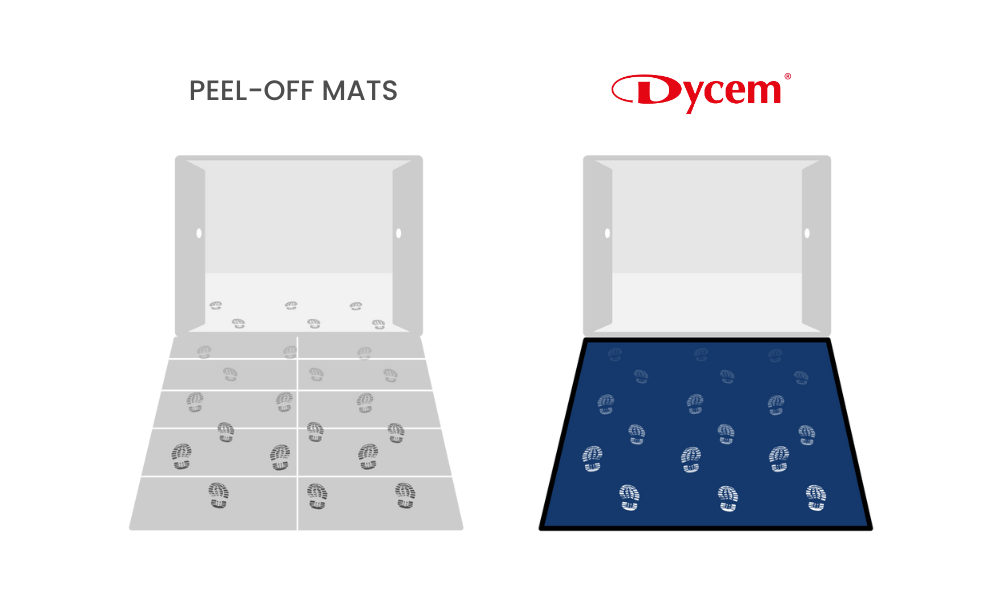
GANGING
To address the issue of size, some facilitles gang sticky mats together. Ganging together at least 10 sticky mats and peeling them twice per 8 hour shift is necessary to prevent 80% of contamination from entering critical areas (Source Mcon).
This option is both expensive and labour intensive. It also generates a huge amount of waste.
When sticky mats are ganged together contamination may collect in the gaps between each mat.
Dycem is a seamless solution, up to 99.9% effective and has built in antimicobial protection.
PARTICLE BUILD UP
Sticky mats lose effectiveness with repeated steps in the same area due to contamination buildup, which can be transferred back onto the footwear.
This issue is unavoidable due to the small size of the mats.
Contaminats can adhere from the mat onto footwear and spread to other areas, increasing the risk of contaminationin critical environments.
Research shows that Dycem mats, designed to remove particles, remove an additional 99% of particles compared to sticky mats
Sticky mats can introduce more contaminants, with a 9.6% to 381.9% increase, even with contaminated footwear.
Choosing the right type of mat is crucial for maintaining a clean and safe environment.
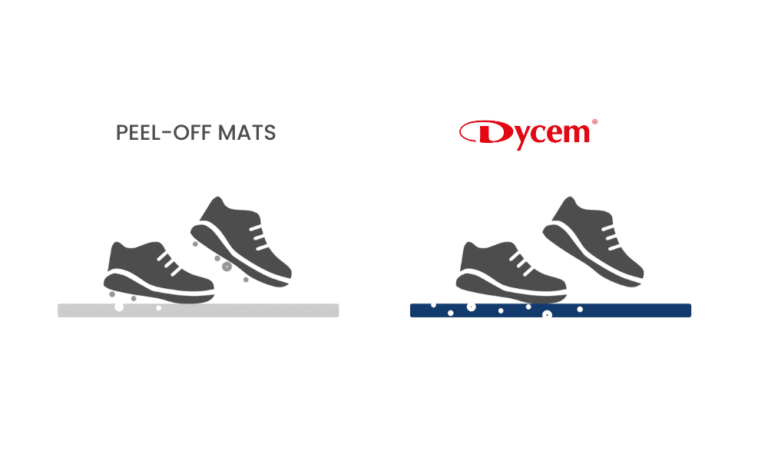
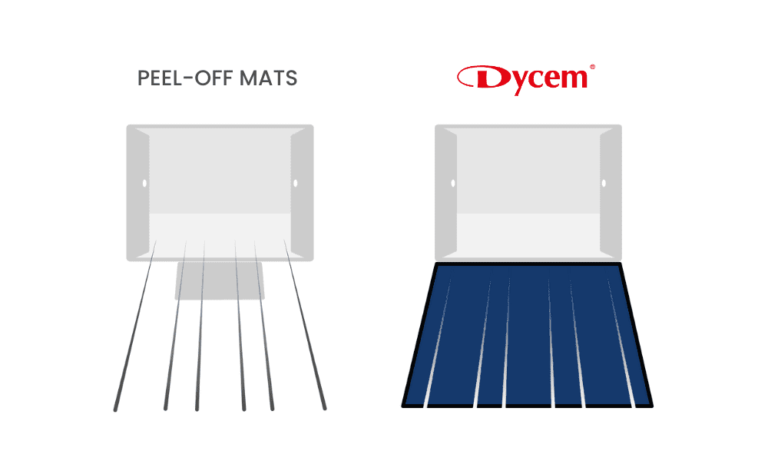
WHEELED TRAFFIC
Sticky mats pose numerous difficulties with wheeled traffic. They are prone to wrapping around wheels, tearing and transferring the adhesive from the sticky mat onto wheels and into the critical environment.
Additionally, sticky mats are susceptible to becoming heavily saturated very quickly, reducing their efficacy in heavy-wheeled traffic environments where particle frequency is generally high and particulates size is super coarse. (over 100+ microns)
Dycem workzone mats are specifically designed to withstand heavy-wheeled traffic, supporting weight up to 90kg/cm2.
PARTICLE SHREDDING
An independent study by a sticky mat manufacturer highlights the problem of particle shredding during the removal process.
It revealed on average 125,000 particles were released back into the environment, re-contaminating the area during the removal process.
Dycem mats capture up to 99.9% of contamination.
The high surface energy of the mats retains this contamination until it is washed away, avoiding particles being redispersed back into your controlled environment.
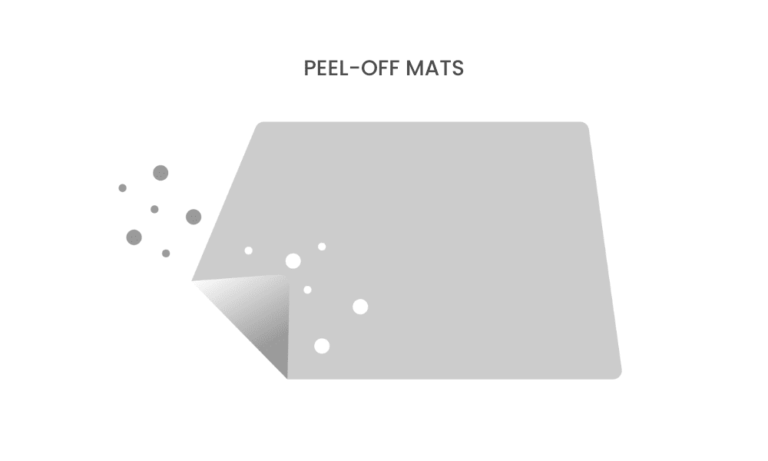
COST
Compared to sticky mats, Dycem offers a more effective solution for controlling contamination in critical environments.
While sticky mats have a lower up front cost, they require regular replacement and disposal, and come with other potential costly risks.
The total cost of implementing sticky mats compared to reusable Dycem mats (which have a lifespan of 3+ years) can be significantly higher.
A recent analysis conducted by a longtime Dycem customer in the aerospace industry revealed a cost saving of $300,000 in 7 years compared to their previous annualized spend on sticky mats
WASTE
Each time a contaminated layer is removed from a sticky mat, it creates an 20cm ball of contaminated waste.
Consequently multiple bins are filled annually with this type of waste.
The accumulation of contaminated waste and the associated costs involved can make sticky mats an impracticle and expensive choice in the long term.
As an alternative, Dycem’s re-useable mats offer a more sustainable and cost effective solution.
